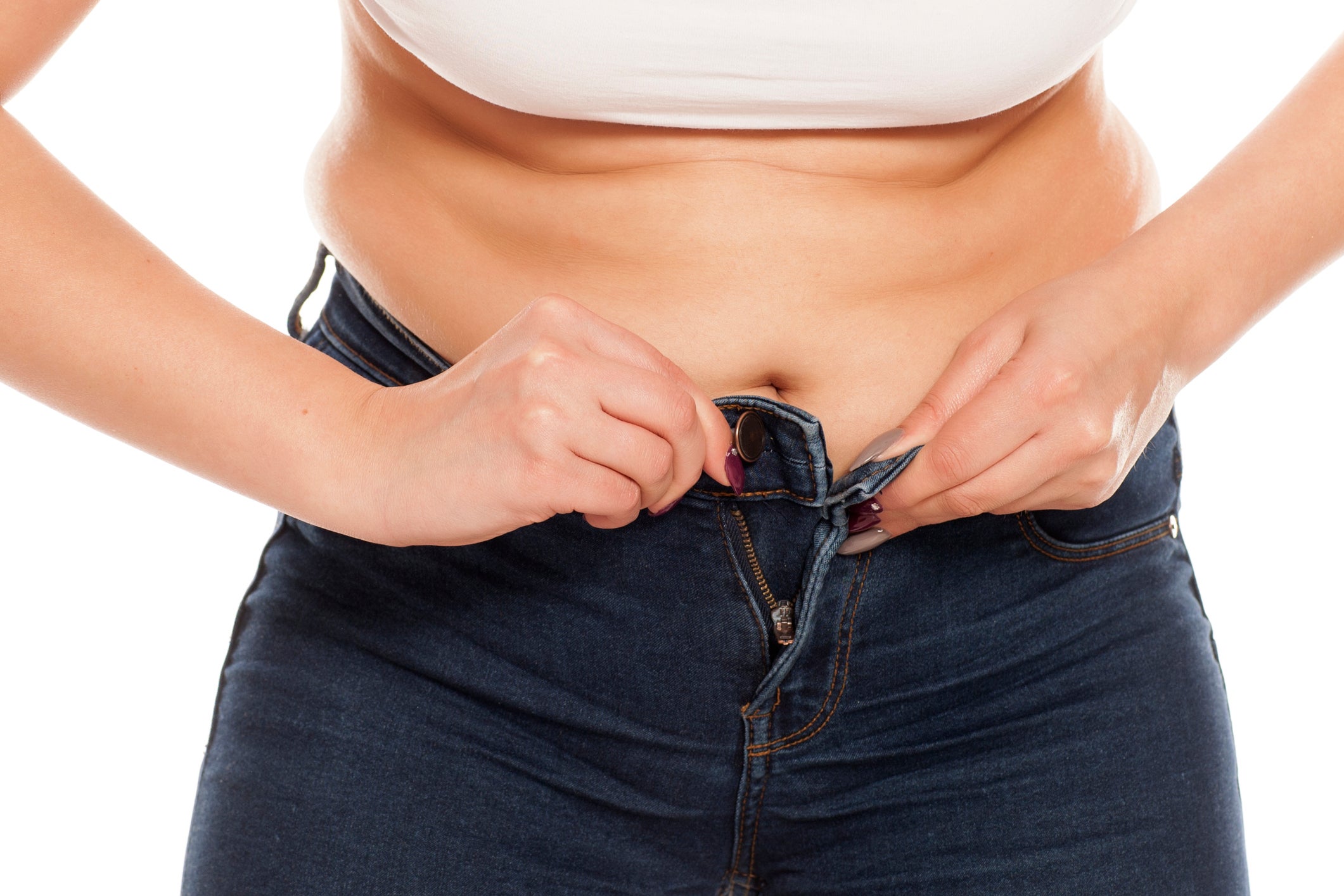To avoid diabetes we should fit into the jeans we wore at 21? What a ludicrous and dangerous claim
The suggestion that adults in their thirties, forties and beyond should be aspiring to squeeze into clothes that fitted when they were barely out of their teens seems unrealistic at best and damaging at most, argues Joanna Whitehead


One of the world’s leading experts on diabetes has sparked anger and disbelief after stating that people who can no longer fit into the jeans they wore when they were 21 are at risk of developing type 2 diabetes.
Professor Roy Taylor of Newcastle University was presenting data at the European Association for the Study of Diabetes annual conference when he made the controversial comments, adding that people who could no longer fit into the same-sized trousers they wore at 21 were “carrying too much fat”.
His study focused on a sample of just 12 people with type 2 diabetes who had a BMI that fell in the “normal” weight range (24.5). The group followed a weight-loss programme which involved consuming just 800 calories per day via an exclusively liquid diet for two weeks.
This was followed by four to six weeks where they received support to maintain their new weight. The participants completed three rounds of this programme, with two-thirds seeing their diabetes go into remission and losing 10-15 per cent of their body weight.
“As a rule of thumb, your waist size should be the same now as when you were 21,” said Prof Taylor.
“If you can't get into the same size trousers now, you are carrying too much fat and therefore at risk of developing type 2 diabetes, even if you aren't overweight.”
While the internet has responded predictably and deliciously, with comments ranging from “If I tried fitting into the orange bell-bottoms I wore when I was 21 then ‘enhanced risk of diabetes’ would not be the biggest risk to my lifestyle”, to “I'm proud to say that the earrings I wore at 21 still fit beautifully”, other users have expressed bafflement at Prof Taylor’s inflammatory remarks.
“You what? My wife has given birth to three children and I’m heading well on my way to mid 40’s there is no way either of us would fit in the jeans we wore at 21 and tbh we wouldn’t want to!!! Your bodies change throughout your life - adapt, this is body shaming at its worst”, wrote one social media user.
Another remarked: “Siri, what's a headline likely to spark body dysmorphic disorder?”
Siri, what's a headline likely to spark body dysmorphic disorder?
— Yasssss California!!! (Erika With a K) (@badbuddhist01) September 28, 2021
For most of my teens and twenties, my diet was largely comprised of sugary treats, fizzy drinks and enough takeaway meals to feed an army - yet I remained slim as a pencil. Booze-addled nights on the sesh and a chronic cannabis habit were all factors contributing to a decidedly unhealthy body but, on appearances alone, I would have been regarded as “healthy”.
Today, at the age of 41, I’m healthier than I’ve ever been in my life. I exercise regularly, eat more than my share of five-a-day, drink less alcohol than ever before and no longer start the day with a family size Galaxy bar (although no shade if you do - that stuff tastes excellent). I’m also around three stone heavier. But the chances of squeezing my body into the fetching corduroy flares I rocked at the tender age of 21 are, ahem, slim indeed.
Human bodies are unique in their diversity and complexity. For too long, slim bodies have been habitually associated with health and wellbeing, with smaller-sized people benefiting from higher pay and social status. According to the NHS, bodies tend to gain fat and lose muscle as they get older.
From taking up physical space in a world that continues to reward women for being small and silent, to not conforming to narrow patriarchal ideals of what constitutes desirability, the very act of being fat is undeniably political
Multiple studies, including a 2018 report published in BMC journal, state that men have more muscle mass, heavier bones and less body fat than women, meaning that body size and fat discrimination has long been associated with a struggle against sexism - it wasn’t for nothing that Susie Orbach titled her landmark book Fat is a Feminist Issue. From taking up physical space in a world that continues to reward women for being small and silent, to not conforming to narrow patriarchal ideals of what constitutes desirability, the very act of being fat is undeniably political.
Pregnancy and the menopause are two major life events many women experience that are often accompanied by weight gain, while both polycystic ovary syndrome and an under-active thyroid (hypothyrodism), which is most common in older women, are also both characterised by an increase in body fat. For many, carrying additional weight is unavoidable.
Elsewhere, the suggestion that adults in their thirties, forties and beyond should be aspiring to squeeze into clothes that fitted when they were barely out of their teens seems unrealistic at best and damaging at most. Beat, the UK’s leading charity supporting those affected by eating disorders agrees, describing Dr Taylor’s comments as “irresponsible”. Tom Quinn, Beat’s director of external affairs tells The Independent: “Weight is just one factor that makes up an overall picture of someone's health, and cannot, in isolation, determine whether someone is healthy or not. We know that people affected by eating disorders who are at a 'normal' or higher weight are often diagnosed later or misdiagnosed, as it is incorrectly assumed that someone has to be very underweight to have an eating disorder.
Weight is just one factor that makes up an overall picture of someone’s health, and cannot, in isolation, determine whether someone is healthy or not
“Whilst eating disorders can affect anyone of any age, gender, race or background, we do know that they are more likely to develop in late teens and early twenties. Highlighting the age of 21 as being the blanket age to be at an ideal weight is irresponsible, especially if someone was unwell with an eating disorder at the time. We also know that changes in shape and size are natural over the course of someone’s lifetime.”
He adds: “Dieting or attempting to lose weight can be very dangerous for those affected by eating disorders, or vulnerable to one, and we do not advise that anyone attempt to do so without first consulting their care team or a healthcare professional.”
Elsewhere, body positivity influencer Alex Light, says: “Everyone’s journey with their body is so individual – there are so, so many reasons why our weight changes as we age, and often increases... the VAST majority of us are a different size to what we were when we were 21… I’m a different shape, too! I carry weight differently. And that’s ok – because I’m not 21 anymore.”
While excess weight may be an indicator of health concerns that might benefit from medical attention, trying to assess a person’s health by the shape of their body alone frequently draws inaccurate conclusions and, more often than not, tends to be outright offensive. Bodies are not public property; their size or shape is not up for public debate - and suggestions that people should be squeezing into post-adolescent clothing to demonstrate their “health” is both farcical and fanciful.
Join our commenting forum
Join thought-provoking conversations, follow other Independent readers and see their replies
Comments
Bookmark popover
Removed from bookmarks